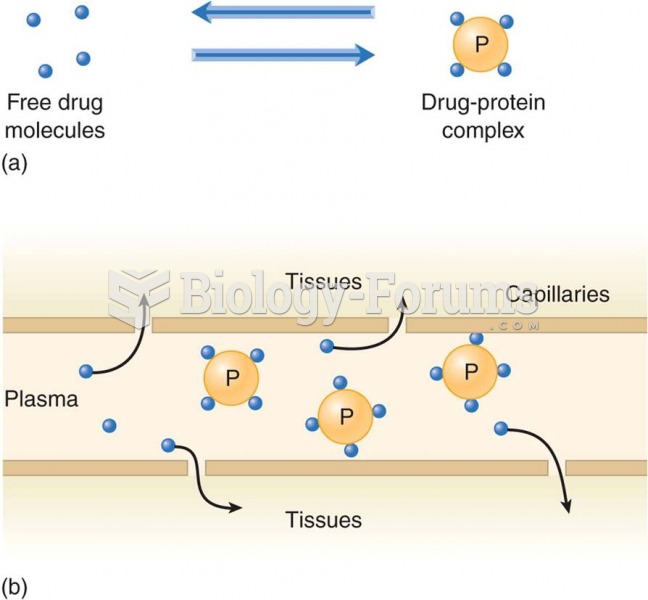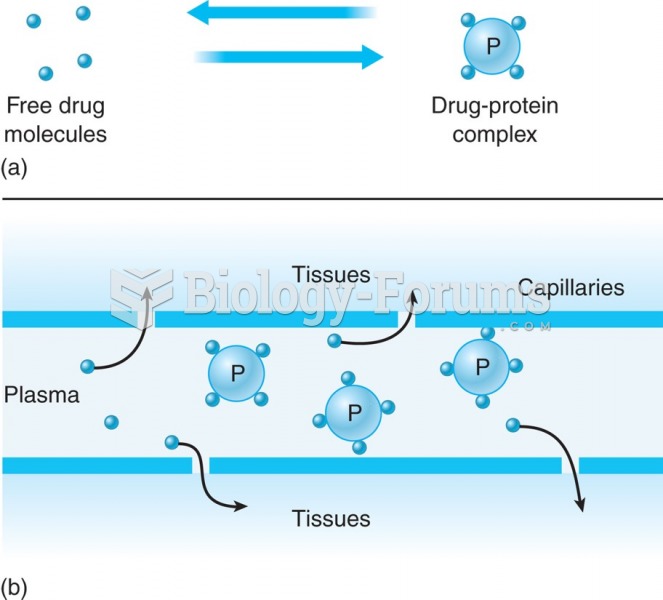|
|
|
About 100 new prescription or over-the-counter drugs come into the U.S. market every year.
The National Institutes of Health have supported research into acupuncture. This has shown that acupuncture significantly reduced pain associated with osteoarthritis of the knee, when used as a complement to conventional therapies.
Acetaminophen (Tylenol) in overdose can seriously damage the liver. It should never be taken by people who use alcohol heavily; it can result in severe liver damage and even a condition requiring a liver transplant.
Eat fiber! A diet high in fiber can help lower cholesterol levels by as much as 10%.
In most climates, 8 to 10 glasses of water per day is recommended for adults. The best indicator for adequate fluid intake is frequent, clear urination.
 Plasma protein binding and drug availability: (a) drug exists in a free state or bound to plasma pro
Plasma protein binding and drug availability: (a) drug exists in a free state or bound to plasma pro
 Example of a choice board used in studies of decision making. This one includes four factors for ...
Example of a choice board used in studies of decision making. This one includes four factors for ...
 Plasma protein binding and drug availability. (a) Drug exists in a free state or bound to plasma ...
Plasma protein binding and drug availability. (a) Drug exists in a free state or bound to plasma ...




